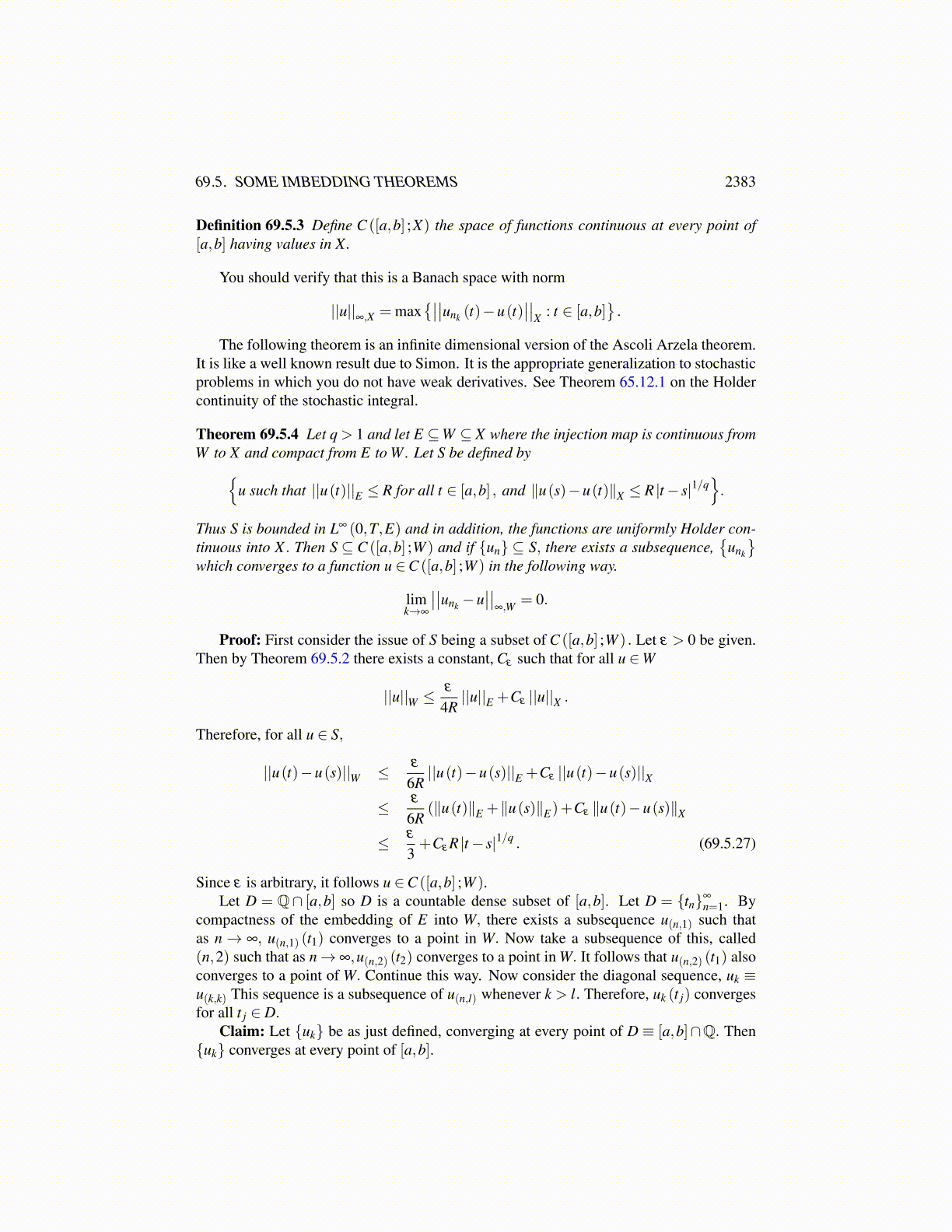
69.4. THE IMPLICIT CASE 2383
Hence {BX (t (k))}∞
k=1 is a convergent sequence in W ′ because
|⟨B(X (t (k))−X (t (m))) ,y⟩|≤ ⟨B(X (t (k))−X (t (m))) ,X (t (k))−X (t (m))⟩1/2 ⟨By,y⟩1/2
≤ ⟨B(X (t (k))−X (t (m))) ,X (t (k))−X (t (m))⟩1/2 ∥B∥1/2 ∥y∥W
Does it converge to BX (t)? Let ξ (t) ∈W ′ be what it does converge to. Let v ∈V. Then
⟨ξ (t) ,v⟩= limk→∞
⟨BX (t (k)) ,v⟩= limk→∞
⟨BX (t (k)) ,v⟩= ⟨BX (t) ,v⟩
because it is known that t → BX (t) is continuous into V ′. It is also known that BX (t) ∈W ′ ⊆V ′ and that the BX (t) for t ∈ [0,T ] are uniformly bounded in W ′. Therefore, since Vis dense in W, it follows that ξ (t) = BX (t).
Now for every t ∈ D, it was shown above that
⟨BX (t) ,X (t)⟩= ⟨BX0,X0⟩+2∫ t
0⟨Y (u) ,X (u)⟩du
Also it was just shown that BX (t (k))→ BX (t) . Then
|⟨BX (t (k)) ,X (t (k))⟩−⟨BX (t) ,X (t)⟩|
≤ |⟨BX (t (k)) ,X (t (k))−X (t)⟩|+ |⟨BX (t (k))−BX (t) ,X (t)⟩|
Then the second term converges to 0. The first equals
|⟨BX (t (k))−BX (t) ,X (t (k))⟩|≤ ⟨B(X (t (k))−X (t)) ,X (t (k))−X (t)⟩1/2 ⟨BX (t (k)) ,X (t (k))⟩1/2
From the above, this is dominated by an expression of the form
⟨B(X (t (k))−X (t)) ,X (t (k))−X (t)⟩1/2 C
Then using the lower semicontinuity of t → ⟨B(X (t (k))−X (t)) ,X (t (k))−X (t)⟩ whichfollows from the above, this is no larger than
lim infm→∞⟨B(X (t (k))−X (t (m))) ,X (t (k))−X (t (m))⟩1/2 C < ε
provided k is large enough. This follows from 69.4.26. Since ε is arbitrary, it follows that
limk→∞
|⟨BX (t (k)) ,X (t (k))⟩−⟨BX (t) ,X (t)⟩|= 0
Then from the formula,
⟨BX (t) ,X (t)⟩= ⟨BX0,X0⟩+2∫ t
0⟨Y (u) ,X (u)⟩du